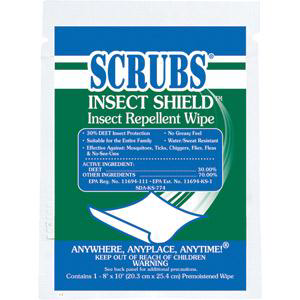Since its discovery in Houston, Texas, in 1987, the Asian "tiger mosquito" Aedes albopictus has spread to 678 counties in 25 states. In the past couple of decades this species has invaded many countries throughout the world through the transport of goods and increasing international travel. It is characterized by its black and white striped legs, and small black and white striped body.
This mosquito has become a significant pest in many communities because it closely associates with humans (rather than living in wetlands), and typically flies and feeds in the daytime, in addition to at dusk and dawn. Aedes albopictus is an epidemiologically important vector for the transmission of many viral pathogens, including the Yellow fever virus, dengue fever and Chikungunya fever.
(The insects can carry three serious diseases)
These tropical mosquitoes have recently (November 2015) been found in 8 cities in Orange County, California). One site of the aggressive pest was one half-mile from Disneyland, in Anaheim. In October 2015, the mosquito was found in Mission Viejo.
Vector control is on high alert, annihilating adults and eggs they find because the tropical mosquito is capable of spreading the deadly viruses that also inflict high fevers and severe aches & pain.
The adult mosquitoes, which live only for about a month, have to catch the disease before being able to spread it. They do so by biting an infected person, usually a traveler returning from a country with an outbreak, such as Mexico and the Caribbean. As of September 2015, there were more than 7000 cases of chikungunya in Mexico, according to the CDC.
Unlike the common house mosquito that bites at dusk and dawn, the tiger mosquito bites aggressively all day long and also active, despite temperature fluctuations. They easily breed both indoors and outdoors. They are not responsible for the transmission West Nile Virus, like the native mosquito.
The expected El Nino rainy winter will likely favor breeding. These species lay their eggs in containers and the larvae dive to the bottom to avoid being flushed away.
Measures of Control:
- Remove water from overflow containers under potted plants and flower pots
- Clean animal drinking bowls often
- Be cautious with the bromeliad tropical plant. Water this plant at the base only so that water doesn’t collect in the leaves or flowers.
- Be mindful of buckets, fountains and other reservoirs of water. The mosquitoes can breed in one teaspoon of water.
- Fill tree holes and other cavities in plants with sand or soil.
- USE AN INSECT REPELLENT CONTAINING A MINIMUM OF 30% DEET. Biting insects have antennae that detect lactic acid, carbon dioxide, and other volatile compounds that humans and animals give off in their breath and from their skin. Mosquitoes are so sensitive to these chemicals that they can detect a potential blood meal from as far away as 100 feet! Insect repellents are believed to work by blocking the stimulation of these receptors, preventing insects from honing in on their source.

DEET has been used by the U.S. public since 1957. Despite 40 years of testing more than 20,000 other compounds since then, DEET remains the most-effective and broad-spectrum repellent currently available.
An ideal selection for municipal employees is “Insect Shield” Insect Repellent Wipes. (Available from Chemex.) These wipes provide a safe yet highly effective level of protection, these wipes offer a one-step, controlled application, making them safer than aerosol and pump sprays around the face. Once applied, the formula is
waterproof and greaseless, so it won’t interfere with activities or tasks. Each wipe contains 30% DEET and is individually packaged. 8" x 10". 100/Case.
Click to edit your new post...
